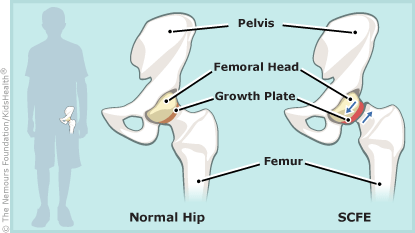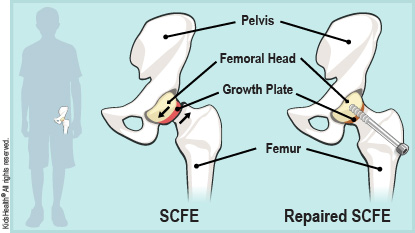- Home
- Parents Home
- Allergy Center
- Asthma Center
- Cancer Center
- Diabetes Center
- A to Z Dictionary
- Emotions & Behavior
- First Aid & Safety
- Food Allergy Center
- General Health
- Growth & Development
- Flu Center
- Heart Health
- Homework Help Center
- Infections
- Diseases & Conditions
- Nutrition & Fitness Center
- Play & Learn Center
- School & Family Life
- Pregnancy Center
- Newborn Center
- Q&A
- Recipes
- Sports Medicine Center
- Doctors & Hospitals
- Videos
- Para Padres
- Home
- Kids Home
- Asthma Center
- Cancer Center
- Movies & More
- Diabetes Center
- Getting Help
- Feelings
- Puberty & Growing Up
- Health Problems of Grown-Ups
- Health Problems
- Homework Center
- How the Body Works
- Illnesses & Injuries
- Nutrition & Fitness Center
- Recipes & Cooking
- Staying Healthy
- Stay Safe Center
- Relax & Unwind Center
- Q&A
- Heart Center
- Videos
- Staying Safe
- Kids' Medical Dictionary
- Para Niños
- Home
- Teens Home
- Asthma Center
- Be Your Best Self Center
- Cancer Center
- Diabetes Center
- Diseases & Conditions
- Drugs & Alcohol
- Expert Answers (Q&A)
- Flu Center
- Homework Help Center
- Infections
- Managing Your Medical Care
- Managing Your Weight
- Nutrition & Fitness Center
- Recipes
- Safety & First Aid
- School & Work
- Sexual Health
- Sports Center
- Stress & Coping Center
- Videos
- Your Body
- Your Mind
- Para Adolescentes
Slipped Capital Femoral Epiphysis (SCFE)
A good, stable connection at your hip joint is what lets you walk, run, make that jump shot, and shake it on the dance floor.
But in some teens — particularly those who are obese — the thighbone and the hipbone are a little less well connected than they should be because of a condition called slipped capital femoral epiphysis(SCFE).
Though the name's quite a mouthful, it simply refers to a shift at the upper part of the thighbone, or femur, that results in a weakened hip joint. Fortunately, when recognized early, most cases of SCFE can be treated successfully.
What Is Slipped Capital Femoral Epiphysis?
To understand SCFE, it helps to know a little about the hip joint. The hip is a ball-and-socket joint, which means that the rounded end of one bone (in this case, the "ball" of the thighbone) fits into the hollow of another bone (the pelvis). Ball-and-socket joints offer the greatest range of movement of all types of joints, which is why you can move your legs forward, backward, and all around.

Kids and teens also have a growth plate at the top of the thighbone (femur), just under the "ball" portion of the joint. This is called the physis, and it's made out of cartilage, which is weaker than bone. The job of the physis is to connect the femoral head (the "ball") to the femur while still allowing the bone to lengthen and grow.
In SCFE, the "ball" (called the epiphysis) slips off of the top part of the femur, almost the way a scoop of ice cream might slip off a cone. Sometimes this happens suddenly — after a fall or sports injury, for example. But it can also happen gradually, with no previous injury.
With a stable SCFE, a person feels stiffness or pain in the knee or groin area. A stable SCFE usually causes the person to limp and walk with the foot turned outward. The pain and the limp typically tend to come and go, worsening with activity and getting better with rest.
An unstable SCFE is usually much more painful, and the person won't be able to put weight on the affected side. Because of the direction of the slipped epiphysis, the person's foot and leg will turn outward (just like in a stable SCFE). An unstable SCFE is very serious because it can restrict blood flow to the hip joint.
Sometimes SCFE can irritate the nerves that run down the leg so the person thinks the pain is coming from the knee. This type of pain is called referred pain, which means pain starts in one part of the body but is felt in another part. In this case, pain begins in the affected hip joint but is felt in the normal knee joint.
Catching SCFE early makes a big difference in how easily doctors are able to treat it.
What Causes It?
No one knows for sure what causes SCFE. Doctors do know SCFE mostly happens in people between the ages of 11 and 16 who are going through a growth spurt. SCFE is more common in guys, though girls can have it too.
SCFE is also more likely to happen to teens who have specific stuff going on with their health, such as:
- obesity (carrying extra weight puts increased pressure on the growth plate)
- endocrine disorders like diabetes, thyroid disease, or growth hormone problems
- kidney disease
- treatments for disease, like radiation and chemotherapy for cancer or taking certain medicines, including steroids
How Is It Diagnosed?
If a doctor thinks you may have SCFE you'll need to see an orthopedic doctor (a doctor who specializes in the treatment of bones), who will do a physical exam, checking the range of motion of the hips and legs and seeing if there is any pain. The doctor will also take X-rays of the hip to look for the displacement at the head of the thighbone.
In rare cases, the X-rays will come back normal, but the pain, stiffness, and other problems will still be there. In these cases, a magnetic resonance imaging study (MRI) might be ordered. The MRI has the ability to catch very early SCFEs, before they start to slip very far.
How Is It Treated?
SCFE is always treated with surgery to stabilize the growth plate that slipped. But even before the surgery, the doctor will try to prevent any further slipping by encouraging rest and the use of crutches to avoid putting weight on the affected leg. Many doctors recommend admission to the hospital as soon as the SCFE is discovered to make sure the patient rests, and so surgery can be done as soon as possible.
Surgery for SCFE is done under general anesthesia (when a patient is completely asleep). Using a fluoroscope — a special X-ray machine that produces a real-time image of the hip on a TV screen — as a guide, the surgeon makes a tiny incision near the hip, then puts a metal screw through the bone and across the growth plate to hold it in place. The screw is placed deep into the bone, and can't be felt by patients after surgery.
Because some patients have a high risk of an SCFE in the other hip, the surgeon might also stabilize that side too, even if it hasn't slipped yet.

Doctors decide how much weight can be placed on the affected leg after surgery based on the severity of the slip. Patients usually can walk with crutches, but those who have both hips treated may need to use a wheelchair for the first couple of weeks after surgery.
After Surgery
Most teens whose SCFE is caught and treated early do well. Doctors will continue to order follow-up X-rays to monitor the condition. In the majority of cases, further surgery is not needed.
However, teens with unstable SCFE have a greater chance of developing other problems later, like stiff hips, early arthritis, leg length differences, or avascular necrosis (where part of the "ball" dies from lack of blood supply). They're also more likely to require additional surgery to take care of the hip.
Not everyone can prevent SCFE. But one thing you can do to lessen your risk is to keep your weight in a healthy range. Maintaining a healthy weight can go a long way in sparing your bones and joints from the excess wear and tear that can weaken and damage them. So if you need help figuring out how to start on a safe diet and exercise plan, talk to your doctor.

© 1995- The Nemours Foundation. KidsHealth® is a registered trademark of The Nemours Foundation. All rights reserved.
Images sourced by The Nemours Foundation and Getty Images.
